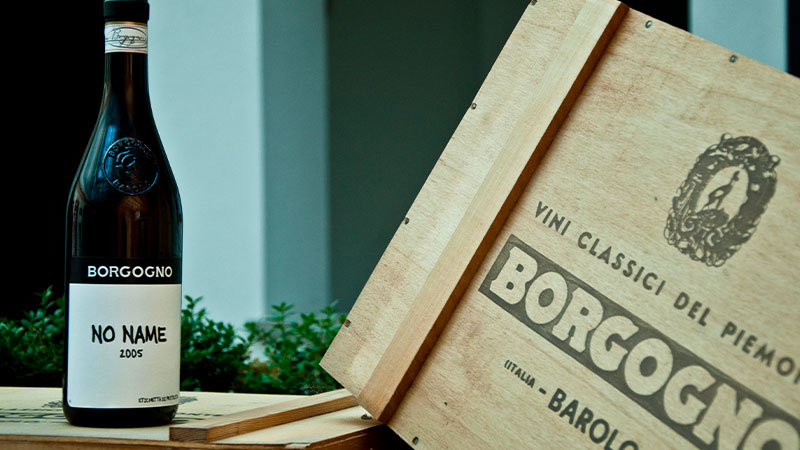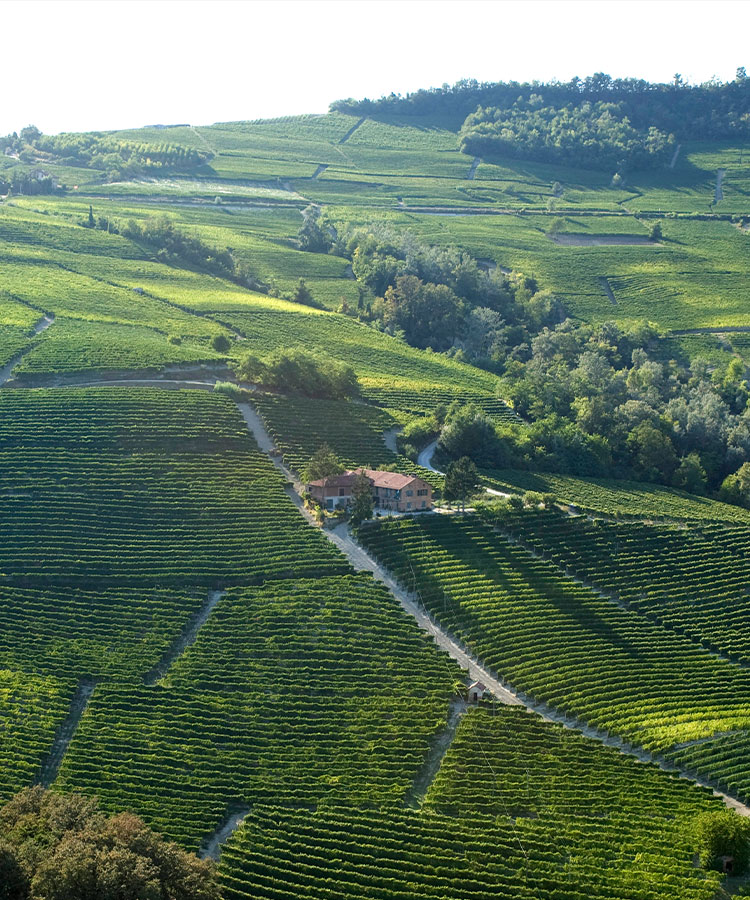
This is a tale where a lot of tradition meets a bit of rebellion. Sure, Borgogno’s “No Name” wine takes you on a journey through the picturesque vineyards of Italy’s Piedmont region and the famous Barolo, but it also tells a story of unyielding spirit and exquisite winemaking.
With over 250 years of winemaking heritage in the Piedmont region of northwest Italy, Borgogno is one of the most revered producers of Barolo. Since 1761, spanning revolutions, wars, and changing tastes, Borgogno has chosen to preserve tried and true artisanal winemaking traditions — while also innovating for the future.
One hundred years after Borgogno’s inception, Borgogno’s Barolo was served at the celebratory lunch for the Unification of Italy in 1861, helping seal the pact. Today, Borgogno’s incredible history and steadfast dedication continue to shine through in all of its wines, including No Name.
Magnifico.
The Birth of No Name

No Name’s origin story began in 2008 when the Farinetti family acquired the winery and committed to strictly following the traditions that Borgogno was founded on. Days before bottling the 2005 vintage, two samples of the wine were presented to Italian wine certification authorities, as required by law. Though it was the exact same wine, the samples were taken from two different tanks, and the second one was rejected: The hue didn’t meet Barolo standards.
Since it contained the same wine as the other tank, Borgogno and the Farinettis strongly disagreed with the assessment. To have the Barolo downgraded to “Langhe Nebbiolo” would have been a major economic setback. Just days before the scheduled bottling, the Farinettis came up with a clever solution: They bottled it anyway and called the wine “No Name” in protest against bureaucratic meddling.
While the overarching intent of wine regulatory bodies is to assure quality in every bottle, at times their rigorous scrutiny can lose sight of the larger picture — presenting an agricultural achievement like Barolo for people all over the world to enjoy. It’s not merely a bottle of wine, but a love letter from Barolo farmers and winemakers, a tangible testament to its centuries-old winemaking heritage, its unique terroir, and a great deal of hard work. No Name’s bold statement helps remind people of that.
This moment of branding brilliance transformed a negative into a positive — the wine became an instant success, and it has since become one of Borgogno’s most popular. It’s known as a textbook representation of a high-quality Barolo that’s consistent and relatively affordable. Oenophiles and lovers of Italian wines hail No Name as one of the greatest values in the world of wine. With expertise honed across generations and centuries, the result is a Barolo from one of the region’s oldest and most revered producers.
A Closer Look at Nebbiolo
No Name is crafted on about 70 acres of Barolo vineyard plots, which include top Barolo crus Cannubi, Liste, and San Pietro delle Viole. The wine is 100 percent Nebbiolo and grown in Borgogno’s estate vineyards.
It’s said that the word “Nebbiolo” derives from the Italian word “nebbia,” which means fog. As autumn arrives in Piedmont, a morning fog drapes itself over the Langhe slopes, signifying the end of a long growing season (usually mid-September to mid-October). The appearance of Nebbiolo grapes is also notable as they’re often described as foggy, with an opaque haziness seemingly powdering the outside of the skins.
No Name’s grapes are farmed organically (Borgogno was officially certified organic in 2019 after beginning the conversion in 2015) and grown in calcareous clay soils on south- and southwest-facing slopes at an altitude anywhere from about 800 to 1,500 feet. Here, the vines collect all the sun they can to yield focused and mineral-driven flavor. After meticulous harvesting by hand, the grapes undergo spontaneous fermentation in concrete tanks, and the wine ages gracefully for over two years in large Slavonian oak casks known as botti in Italy, creating an elegant and powerful product.
The ‘No Name’ Experience
The resulting wine is ruby-hued with ethereal aromas of violet, rose, spice, tar, and wild cherry. The palate offers dry, velvety tannins and a full-bodied mouthfeel with balanced acidity and layered flavors of mature red fruits. No Name may not officially be a Barolo, but the quality is evident in every sip.
Borgogno’s No Name is delicious on its own — especially on a crisp fall evening — but when paired with traditional Italian fare, this wine really sings. The lively acidity and firm structure mean it can hold its own against hearty dishes like braised beef, wild game stew, or aged cheeses. It also pairs beautifully with marbled ribeye, herbed lamb, or something stewy like beef bourguignon. It seamlessly complements barbecued ribs, grilled sausages, or anything else with bold flavors. For vegetarians, try it with grilled portobello mushrooms and eggplant.
No Name’s reasonable price makes this hand-crafted, small-production Piedmont Nebbiolo accessible to wine lovers everywhere. Purchase a bottle to taste centuries of craftsmanship and passion and allow No Name to transport you to the rolling Langhe hills.
It’s a quirky label with a compelling story, but wine is ultimately not about labels: it’s about what’s inside the bottle. No Name overflows with an authentic Piedmont wine experience worth discovering.
This article is sponsored by Ethica Wines.
